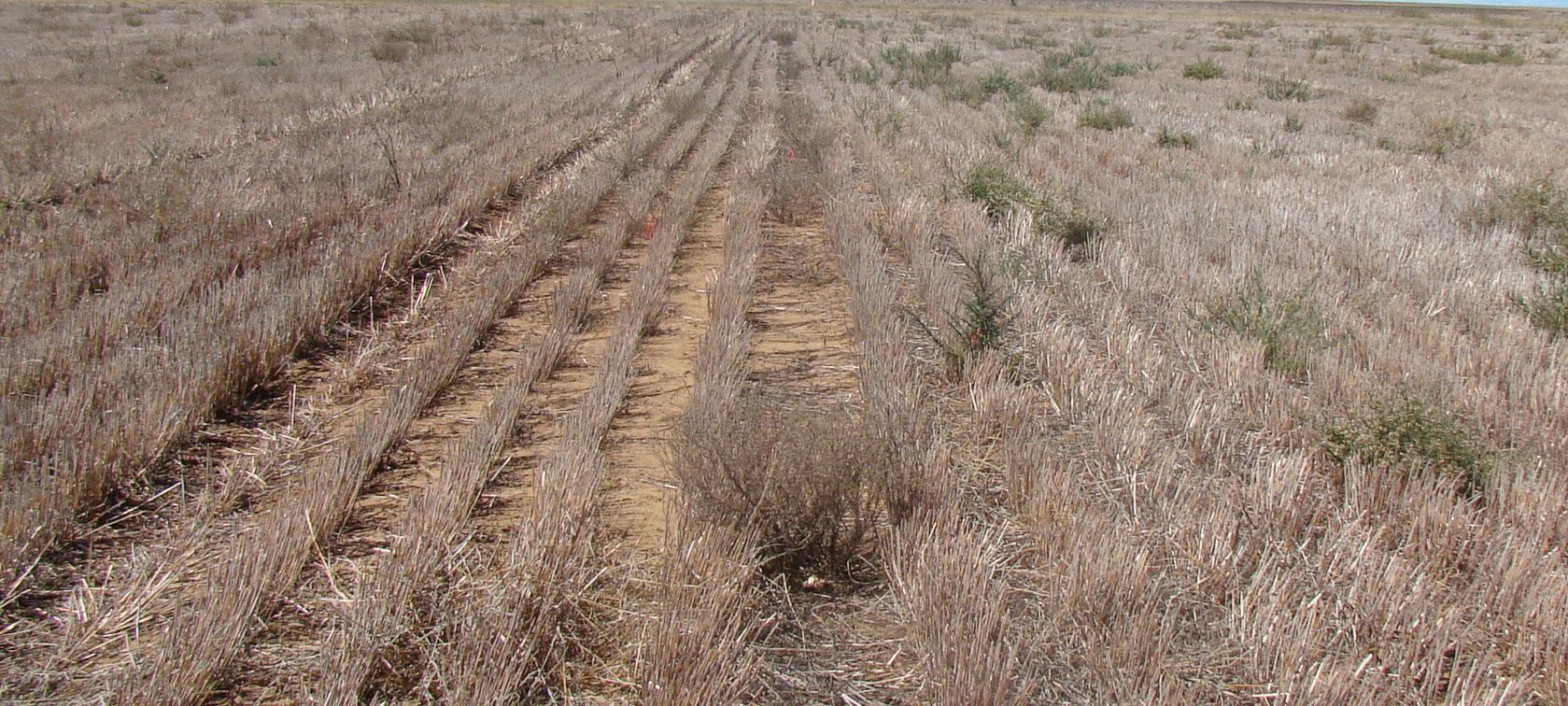OPTICAL SPOT SPRAY TECHNOLOGY.
• Resistance management tool for problem and hard to kill weeds.
• Precision application technology saving time and money whilst reducing overall herbicide usage.


TECHGUIDE WEEDiT
OPTICAL SPOT SPRAY TECHNOLOGY REGISTRATIONS FOR HERBICIDES
With the adoption of optical spot spray technology (OSST) on many farms across Australia, Nufarm have added a new registration to many of its knockdown and fallow products to ensure growers get the best out of this technology.

REGISTERED FOR APPLICATION WITH OSST
Unique legally registered products.
ARCHE R® 750
Nufarm
Picloram 2,4-D
WEEDMASTE R®
OSST KEY POINTS
• OSST can help reduce herbicide application in fallow applications by directly targeting weeds
• OSST is optimal for use in paddocks where weed cover is up to 30%* and where spot or patch spraying to target difficult to control weeds such as fleabane, milkthistle and barnyard grass
• OSST allows the cost-effective use of alternate mode of action chemistry in broadacre fallow situations
• In some cases OSST allows growers to use higher rates to target weeds to optimise control*
* Note that some label or permit uses specify a different maximum weed cover percentage or application rate, always refer to the label or permit for the product prior to use.
DS T ® DROPZONE ® AMICIDE ADVANCE ® 700
Paraquat
CRUCIA L® Nufarm
250
HOW OSST WORKS
OSST, such as WEED-IT or WeedSeeker®, uses sensors mounted on spray equipment to detect live plant matter and directly spray the weed, rather than spraying an entire paddock. This can significantly reduce herbicide application in fallow or knockdown situations.
Through extensive R&D collaboration between Nufarm, Crop Optics, Croplands and Bill Gordon Consulting, clear guidelines have been established to ensure optimal weed control.
OSST has a great fit for spot or patch spraying to target difficult to control weeds such as fleabane, milkthistle and barnyard grass, allowing higher rates to be used*. However, as with any effective weed control, it is still critical to target young, actively growing weeds.
It is also important to take every opportunity to mix different groups of herbicides together to suit the weed spectrum in your paddock and rotate as much as possible between groups to effectively manage resistance.
• WEED-IT sprays on average 5 to 20% of the paddock depending on weed populations.

• WEED-IT’s near infrared technology only detects the chlorophyll present in living plants sending a quick response to the nozzles which release the spray onto the weed.
• WEED-IT is not affected by changes in background conditions because it is only measuring active chlorophyll. For the operator this means even better targeting of small grasses.
HERBICIDE APPLICATION WITH OSST
When using registered products in conjunction with OSST, sprayers should be calibrated to spray the equivalent of 100 L/ha water volume.
The registration is designed to control weed cover between 0-30%. If the percentage of weed cover exceeds 30%, growers should use the registered boom spray rates.
Figure 1: Amicide Advance 700 applied (left) through OSST at 4 L/100 L on fleabane, 60 days after application. Untreated control (right). Source: Frank Taylor, Nufarm 2013
Amicide Advance 700 applied
Untreated control
* Note that some label or permit uses specify a different maximum weed cover percentage or application rate, always refer to the label or permit for the product prior to use.
HERBICIDE APPLICATION WITH OSST
The use of Nufarm’s Collide 700 can assist with droplet management and improved herbicide performance. Refer to product label for further adjuvant recommendations. PRODUCT
Biffo
200 g/L Glufosinate - ammonium
CRUCIAL 600 g/L Triple Salt Advanced Technology Herbicide Australian bindweed, barnyard grass, bladder ketmia, sowthistle, turnip weed, yellow vine
700 g/kg Tiafenacil Afghan
melon, Bellvine, Heliotrope, Sowthistle
500
g/L
Fleabane & Yellow vine (Caltrop) Barnyard grass, Bladder ketmia & Sowthistle Turnip weed
10
L / 100
2.7 – 5.5 L/100
L
COMMENTS
Apply to rosette to flowering plants. Use higher rate on late flowering/ mature plants.
Australian bindweed: Suppression only at lower rates. Use higher rates on larger mature plants.
6.7 L/100
L
750
g/L Clopyralid
Paraquat 250 250 g/L Paraquat
Trooper 75-D* 300 g/L 2,4-D, 75 g/L Picloram
weedmaster DST
470 g/L Dual Salt Technology® Glyphosate
Capeweed,
Australian bindweed, barnyard grass, bladder ketmia, cotton, fleabane, sowthistle, turnip weed, yellow vine
Fleabane, sowthistle, yellow vine
Australian bindweed, barnyard grass, bladder ketmia, sowthistle, turnip weed, yellow vine
4.8 L/100 L
3 – 9 L/100 L
9 L/100 L (Australian Bindweed)
1 – 2 L/100 L (yellow vine)
2 L/100 L (fleabane)
2 – 4 L/100 L (sowthistle)
3.5 L/100 L (sowthistle, yellow vine, turnip weed)
3.5 – 7 L/100 L (Australian bindweed, barnyard grass)
Unique registration to allow use with spray droplets not smaller than a COURSE droplet size category. Refer to label for information on rates, droplet size and buffer zone requirements.
Apply to rosette - flowering plants. Use higher rate on late flowering/mature plants or plants under moisture stress.
Rates and comments vary between weed species. Check the product label for full rates and comments.
Apply to rosette to flowering plants. Use higher rate on late flowering/ mature plants or plants under moisture stress. Check plant back windows before use.
Apply to rosette to flowering plants. Use higher rate on late flowering/ mature plants.
Australian bindweed: Suppression only at lower rates. Use higher rates on larger mature plants.
The use of these products must be conducted under the specific spray drift restraints specified on the label.
The information and recommendations set out in this brochure are no substitute for professional or expert advice and are based on tests and data believed to be reliable at the time of publication. Results may vary, as the use and application of the products is beyond our control and may be subject to climatic, geographical or biological variables, and/or developed resistance. To the maximum extent permitted by law, Nufarm Australia Limited disclaims all warranties of any kind, whether express or implied, including but not limited to any warranty that the information is up-to-date, complete, true, legally compliant, accurate, non-misleading or suitable.
To find out more on OSST, visit croplands.com.au
Please refer to respective product labels for registered uses in specific crops. For more information on WEED-IT, contact your local Nufarm Territory Manager. nufarm.com.au
051322r04
RATES
WEEDS TARGETED WITH OSST
Australian bindweed, barnyard grass, bladder ketmia, Caltrop, Flaxleaf Fleabane, Wild Turnip L
Apply to actively growing weeds. Good coverage is essential. DO NOT sow crops until 14 days or more have elapsed after the final application.
(sowthistle, yellow vine, turnip weed)
40 g/100 L Terrad’or + 1.8 L/100 L Nufarm CRUCIAL + 1 L/100 L Banjo® Spray Adjuvant
Terrad’or
Rates and comments vary between weed species. Check the product label for full rates and comments
DROPZONE
2,4-D with Droplet Optimization Technology
Apply to rosette to flowering plants. DO NOT apply greater than 30 L of spray mixture per hectare through Optical Spot Spraying Technology equipment (2 L of product per hectare equivalent).
Amicide Advance 700* 700 g/L 2,4-D Fleabane, sowthistle, yellow vine (Caltrop)
100 - 200 mL/100L
Archer
Thistles, Vol Chickpeas, Vol Faba Beans
© 2023 Nufarm Australia Ltd. All trade marks (®,™) are owned by Nufarm or used under license, or are owned by third parties and used only to describe compatibility with those related products.




